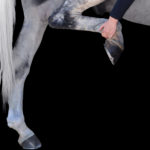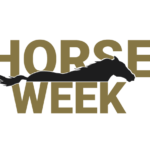
After your horse, your helmet is probably your closest partner when you’re riding or driving. Like your horse, it also requires care—and, eventually, a happy retirement! Whether your helmet is stylish, blingy, or classically elegant, it’s a crucial piece of safety equipment first and foremost, and it’s important to keep it in good condition. We asked the helmet experts at Charles Owen, the Official Helmet Supplier and a Safety Education Partner of US Equestrian. Here’s what they advise:
- Keep it cool.
Don’t store your helmet in direct sunlight or high temperatures. Keeping your helmet in a hot car, for example, is a no-no: that can damage your helmet and make it less effective in case of a fall. The expanded polystyrene or EPS—the layer of microscopic “bubble wrap” that protects your head in the event of a fall—will melt in extreme heat.
- Keep it clean.
Sweat, makeup, sunscreen, dirt—these accumulate on your helmet’s interior and can break down the lining. So give your helmet a clean. It’s important to use only products specifically made for helmets, like Charles Owen’s helmet cleaner and deodorizer. Going to extreme measures—like sending your helmet to the drycleaner or, heaven forbid, sticking it in a clothes or dishwasher—is a really bad idea. That can compromise the materials inside the helmet and reduce the helmet’s effectiveness.
- Check those removable liners.
Many helmet models now offer removable liners, which can help even the hardest-working helmets stay hygienic. Cleaning and replacing those liners can extend your helmet’s lifespan.
- Neither borrower nor lender be.
“Much like a new pair of boots, helmets will break in and mold to the shape of your head as they are worn,” says Charles Owen’s managing director, Roy Burek. “Therefore, it’s important not to lend your helmet to another person, since the difference in head shape could stretch your helmet and course it to be ill-fitting when it is returned to you.”
When to Retire Your Helmet
“Each riding helmet is designed to protect your head in the event of a fall and should be replaced after suffering a severe blow, especially if the wearer has experienced symptoms of brain shear or concussion,” says Burek. (For more on concussion and its symptoms, check out the concussion resources in the US Equestrian Learning Center.)
Burek advises equestrians to replace their helmets after every fall in which they hit their heads, because the microscopic “bubbles” in the EPS layer of the helmet burst on impact. This leaves that area compromised and unable to offer the same level of protection if it receives another impact there. Dropping a helmet onto a hard surface in the barn also can cause damage, even if the damage isn’t visible. If your helmet hasn’t sustained an impact, Burek still recommends replacing it after five years of consistent use, due to natural wear and tear on its materials.






